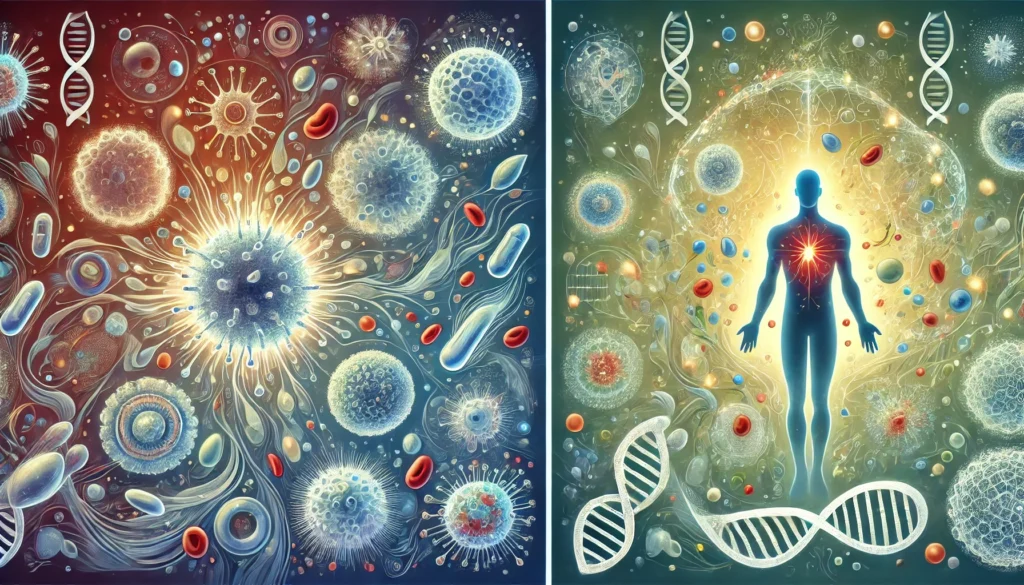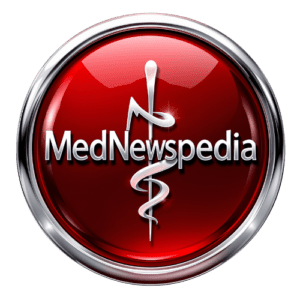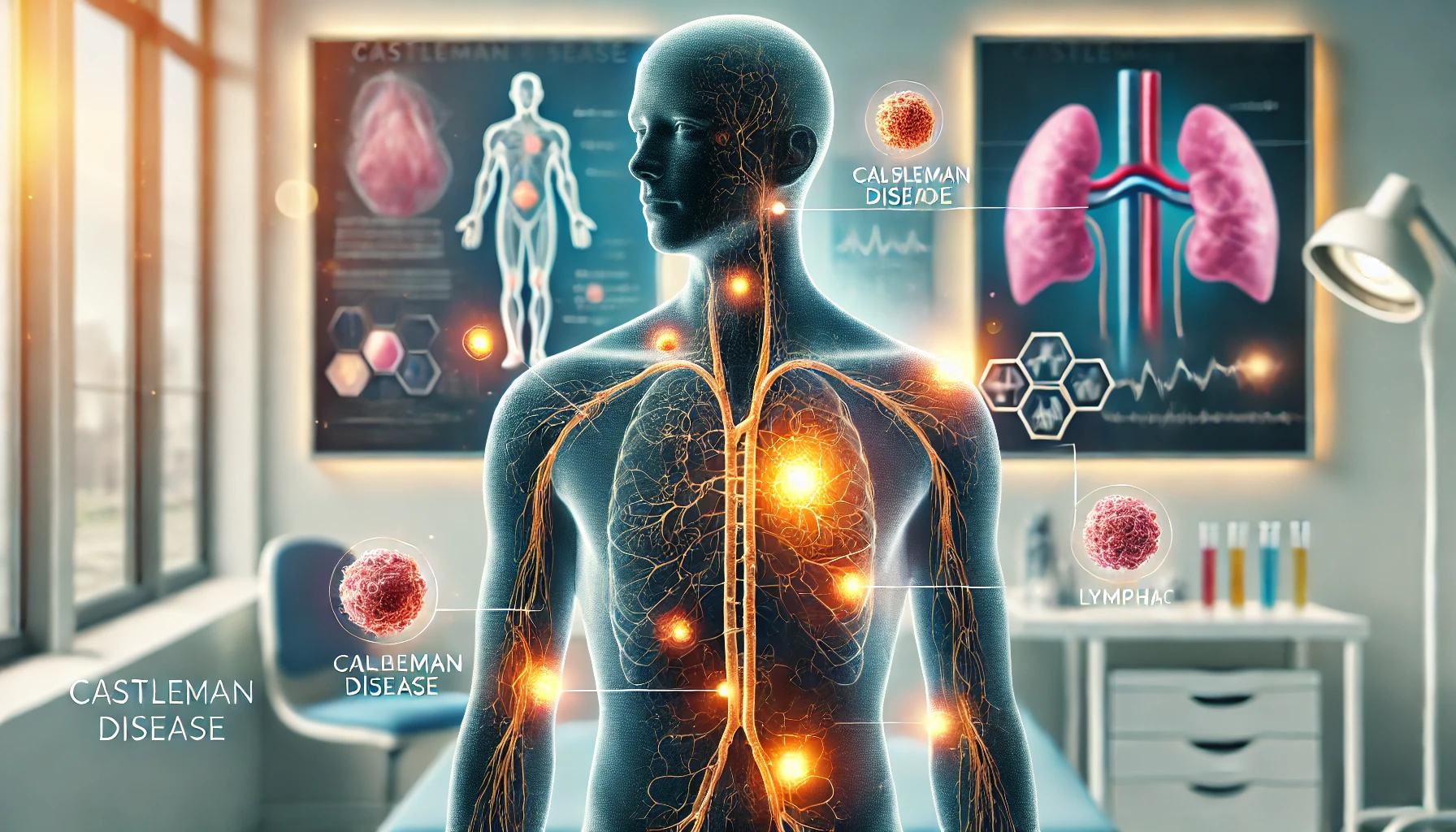Description
An uncommon ailment first identified in 1954 by Dr. Benjamin Castleman, Castleman disease is often referred to as Castleman syndrome and is also called angiofollicular lymph node hyperplasia. There are localized or systemic manifestations since it mainly impacts the lymph nodes and associated tissues. Castleman disease’s causes, diagnostic procedures, and therapeutic strategies have all improved in recent years, despite the fact that its origin is still mostly unclear. The three primary kinds of Castleman disease are multicentric Castleman disease (MCD), unicentric Castleman disease (UCD), and mixed-type Castleman disease.
As opposed to MCD, which involves numerous swollen lymph nodes dispersed across the body, UCD manifests as a single mass or swollen lymph node in a single area. Castleman disease with a mixed-type presentation demonstrates both MCD and UCD features. Castleman illness exhibits hyperplastic lymphoid follicles and aberrant blood vessel proliferation in the lymph nodes, which results in the development of hyaline vascular or plasma cell variation. Symptoms may include fever, lethargy, expanded lymph nodes, night sweats, and other systemic signs, depending on the kind and area of the disease.
You May Also Like:
Hypogammaglobulinemia: Description, Causes, and Treatment Protocol
IgA nephropathy / Berger’s disease: Description, Causes, and Treatment Protocol
Castleman disease: Description, Causes, and Treatment Protocol is an original (MedNewsPedia) article.
Possible Causes
The specific origins of Castleman disease, which affects the lymph nodes along with other tissues, are still mostly unclear. The onset of this complex illness, however, has been linked to a number of potential reasons, as follows: –
Dysregulated Immune Response: A probable factor in the development of Castleman disease is the deregulation of immune function. Uncontrolled lymphoid tissue development can be brought on by abnormal cytokine production, notably IL-6. The exact source of this immunological dysregulation is unknown. A genetic predisposition or other factors that disrupt the immune system’s regular functioning may nevertheless be the cause.
Viral Infections: Viral infections, particularly human herpesvirus 8 (HHV-8), are one of the main hypothesized causes of Castleman disease. HHV-8, another term for Kaposi’s sarcoma-related herpesvirus (KSHV), has been linked to multicentric Castleman disease, particularly in patients with compromised immune systems, including those with HIV/AIDS. Interleukin-6 (IL-6) is one of the inflammatory cytokines that the virus appears to boost production of and is associated with aberrant lymph node development and disease pathogenesis.
Genetic Predisposition: In certain instances of Castleman disease, genetic factors might potentially be involved. While the majority of instances are sporadic, some genetic variations, specifically in the multicentric type, have been found to increase vulnerability to the disease. These inherited traits could affect how the immune system reacts, which would explain the aberrant lymph node enlargement found in Castleman disease.
Environmental Triggers: Despite the paucity of available data, environmental influences have been suggested as potential factors in the development of Castleman disease. Potential immune system disruption and the development of the disease may result from exposure to specific chemicals or contaminants.
Paraneoplastic Syndrome: Rarely, Castleman illness may be accompanied by underlying tumors like lymphoma or other malignancies that manifest as paraneoplastic syndrome. Castleman disease symptoms are influenced by molecules that tumors can manufacture that have systemic consequences, such as lymph node expansion and dysregulated cytokines.
Other Infectious Agents: Some cases of Castleman disease have been linked to other infectious agents, including the Epstein-Barr virus (EBV) and the human immunodeficiency virus (HIV). To completely comprehend their significance, more research is needed to clarify their precise involvement in the development of diseases.

Exacerbating and Mitigating Factors
The development and treatment of Castleman disease may be greatly impacted by its aggravating and mitigating elements. The intensity of the symptoms, the occurrence of flare-ups, and the prognosis as a whole may all be impacted by these variables. Castleman disease has several major aggravating and alleviating factors.
A few examples of the Castleman disease’s aggravating factors include: –
Concurrent Infections: Viral infections, especially human herpesvirus 8 (HHV-8), can cause or worsen Castleman disease, mainly the multicentric variety. Continued immune system dysregulation and aberrant cytokine production brought on by infections might result in more severe disease symptoms.
Immunodeficiency: The likelihood of developing Castleman illness and its course may be accelerated by underlying immunodeficiency or impaired immune function. HIV/AIDS and autoimmune illnesses might impair the body’s capacity to control the immune system and encourage aberrant lymph node enlargement.
Stress: Inflammation and deregulation of the immune system have been related to chronic stress. Elevated stress levels may make Castleman disease symptoms worse and cause flare-ups.
Inflammatory Stimuli: Environmental causes or other factors that trigger inflammation may make the condition worse. This includes being exposed to specific toxins, pollutants, or infectious diseases.
Coexisting Medical Conditions: The course and result of Castleman disease may be impacted by pre-existing medical problems like lymphoma or other malignancies.
Medications: Certain drugs, especially immune system suppressants (immunosuppressants), can aggravate Castleman disease or cause it to develop in people who are predisposed to it.

The following are some of the Castleman disease mitigating factors: –
Treatment Adherence: Castleman disease must be managed and complications avoided by adhering to the recommended treatment regimen, which includes medication and supportive care.
Immunomodulatory Therapies: Several immune-modulating treatments, like monoclonal antibodies that target IL-6 like siltuximab or tocilizumab, demonstrate efficacy in addressing multicentric Castleman disorder and may help alleviate symptoms.
Prompt Diagnosis and Therapy: Effective symptom management depends on timely diagnosis and the prompt beginning of proper treatment.
Avoiding Triggers: The condition may not worsen if relevant triggers, like infections or environmental causes, are recognized and avoided.
Supportive Care: Patients with Castleman disease may benefit from adequate supportive care, which includes pain treatment, nutritional assistance, and psychological treatments.
Ongoing Monitoring: Healthcare professionals can modify treatment programs as necessary to ensure effective management through periodic evaluations and tracking of disease development.
Lifestyle Modifications: A healthy lifestyle that incorporates regular exercise, a balanced diet, and stress-reduction measures can strengthen one’s immune system and increase the body’s capacity to fight off disease.

Standard Treatment Protocol
According to the kind and intensity of the condition, many treatments are available for Castleman disease. The most common form of treatment for unicentric Castleman disease involves surgical removal of the troubled lymph node, which frequently yields a full recovery. In contrast, multicentric Castleman disease care calls for a more involved strategy, frequently incorporating a combination of treatments. The following are frequently included in the normal multicentric Castleman disease treatment protocol: –
Immunotherapy: By blocking the activity of the overproduced cytokine, monoclonal antibodies that target IL-6, including siltuximab or tocilizumab, offer promising benefits in certain MCD cases.
Chemotherapy: To minimize lymph node growth and manage disease development, chemotherapeutic drugs can be given, including rituximab, corticosteroids, and etoposide.
Antiviral therapy: Antiviral drugs may be recommended for MCD caused by HHV-8 to stop viral replication.
Stem cell transplantation: Autologous transplantation of stem cells may be an alternative to treat severe and resistant conditions and offer long-lasting remission.
Supportive care: To control their symptoms and enhance their standard of life, patients may need supportive care. This covers taking care of dietary and psychosocial needs along with managing pain and infections.
Treatment Options
Prescription Medications: The following are some of the medications recommended for Castleman disease: –
Corticosteroids
In specific cases of Castleman disease, prednisone, alongside other corticosteroids might be administered to treat systemic symptoms and decrease inflammation.
Nonsteroidal anti-inflammatory drugs (NSAIDs)
Ibuprofen and other NSAIDs, especially for UCD or milder MCD, can help with pain relief and inflammation reduction.
Over-the-counter Formulations: These include: –
Acetaminophen
Acetaminophen can help to lessen the slight discomfort brought on by Castleman disease because it is a pain reliever.
Nutritional Supplements: The following are some dietary supplements for managing Castleman disease: –
Vitamin D
An improved immunological function has been linked to proper vitamin D levels. As a result, ensuring sufficient vitamin D intake may support the immune system’s response to Castleman disease.
Omega-3 Fatty Acids
Flaxseed oil and fish oil include omega-3 fatty acids, which are anti-inflammatory and can help regulate the immune system. In those with Castleman disease, these fatty acids may help control inflammation and support immunological function.
Natural Remedies: The following list includes several natural treatments for Castleman disease: –
Green tea extract
The immune system may benefit, and inflammation may be reduced, because of the anti-inflammatory and antioxidant characteristics of green tea polyphenols.
Curcumin
Curcumin, an anti-inflammatory compound found in turmeric, can help reduce inflammation brought on by Castleman disease.

Herbal Remedies: The following are a few herbal treatments for Castleman disease: –
Astragalus (Astragalus membranaceus)
The immune system is thought to be supported by astragalus, which may be useful as adjuvant therapy in the treatment of Castleman disease.
Cat’s Claw (Uncaria tomentosa)
The immune-boosting and anti-inflammatory benefits of this herb have been employed traditionally.
However, it is important to remember that while several of these complementary medicines and natural cures have demonstrated promising outcomes in preclinical research or case studies, their safety and effectiveness in the setting of Castleman illness have not been decisively proven. Therefore, before adopting any additional treatments into their treatment strategy, individuals contemplating these choices should speak with their healthcare practitioners.
Conclusion
Castleman disease, a rare and complex condition affecting the lymph nodes and associated tissues, presents distinct challenges in diagnosis and management. With its varying manifestations—unicentric, multicentric, and mixed-type—the disease requires tailored treatment strategies ranging from surgical interventions for localized cases to immunotherapy, chemotherapy, and supportive care for systemic forms. Advances in understanding the role of cytokines like IL-6, viral triggers such as HHV-8, and immune dysregulation have significantly improved therapeutic options and outcomes.
Adhering to prescribed treatments, monitoring disease progression, and making lifestyle adjustments are critical for managing symptoms and improving quality of life. Complementary therapies, such as nutritional supplements and herbal remedies, may offer additional support but should always be used under medical guidance.
Continued research is vital to uncover the underlying causes and develop innovative therapies for Castleman disease. Collaboration between patients and healthcare providers remains essential to navigating this complex condition and optimizing individual care plans.

Additional resources for further reference
https://www.ncbi.nlm.nih.gov/books/NBK576394
https://ashpublications.org/blood/article/135/16/1353/452573/Overview-of-Castleman-disease
https://rarediseases.org/rare-diseases/castlemans-disease
https://www.nature.com/articles/s41572-021-00317-7
Important Note: The information contained in this article is for general informational purposes only, and should not be construed as health or medical advice, nor is it intended to diagnose, prevent, treat, or cure any disease or health condition. Before embarking on any diet, fitness regimen, or program of nutritional supplementation, it is advisable to consult your healthcare professional in order to determine its safety and probable efficacy in terms of your individual state of health.
Regarding Nutritional Supplements Or Other Non-Prescription Health Products: If any nutritional supplements or other non-prescription health products are mentioned in the foregoing article, any claims or statements made about them have not been evaluated by the U.S. Food and Drug Administration, and such nutritional supplements or other health products are not intended to diagnose, treat, cure, or prevent any disease.


